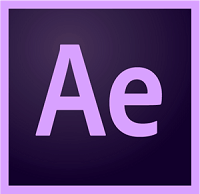

- TUTORIEL ADOBE AFTER EFFECT CS5 720P
- TUTORIEL ADOBE AFTER EFFECT CS5 DRIVERS
- TUTORIEL ADOBE AFTER EFFECT CS5 FULL
- TUTORIEL ADOBE AFTER EFFECT CS5 WINDOWS
While this process is heavily dependent on hard disc performance, CS5 loaded our projects noticeably faster than CS4.Īfter Effects can now blast through that dreaded 4GB limit. In addition, simple things like how fast the project loads can be important as even mid-sized documentary projects can normally take 15 minutes or more to load. A key factor we really could not put into numbers is how, with GPU acceleration on, scrubbing the timeline is almost as smooth as analog tape used to be, even with computationally intensive projects. Of course, many other factors affect your editing experience that we have not touched on here. We also were surprised to see faster times for some CS4 render and encoding operations compared to the non-GPU accelerated CS5. This may be due to our rather slow 2.33GHz CPUs. Our CPU load percentages are higher than those we saw during the Adobe pre-release presentations. But, remove GPU acceleration and you have to wait for everything, including nearly 10 times as long for your h.264 encode to complete. Here is how the projects stacked up and shook out.Īs you can see, CS5 with the Mercury Playback Engine, GPU acceleration and native 64-bit software, combine to give you remarkable performance improvements in timeline playback and encoding.

TUTORIEL ADOBE AFTER EFFECT CS5 FULL
Lastly, we set our Program window to 100% full resolution and waited for all hard drive activity to normalize after loading each project before running the tests. With this one, we did swap out our effects for the GPU accelerated versions.
TUTORIEL ADOBE AFTER EFFECT CS5 720P
Project 3 is a random selection from among dozens of simple 720p commercial projects we had lying around in our system. nVidia provided the project and media files for Project 2 that gives an impressive demonstration of the GPU performance with P2 HD files. In Project 1, we tried to provide a mix of HD (and one SD) file types regardless of how the GPU acceleration would handle the task. We applied effects to each layer and, in the case of CS5, used CUDA accelerated effects (CS5 comes with 30). We kept the project lengths to 60-seconds simply to allow us to run repeat tests. We ran three test projects that consisted of a variety of HD file types compatible with both CS4 and CS5 to test various aspects of performance. To measure timeline rendering and output encoding times, we simply used a stopwatch. That means we can have far more applications open, so having some extra processing headroom becomes valuable. Why is CPU load important? The new 64-bit architecture allows us to cram our systems with practically an unlimited amount of usable RAM.
TUTORIEL ADOBE AFTER EFFECT CS5 WINDOWS
There is no performance display in CS4, so we had to estimate FPS (yes, it was slow enough to estimate manually) and we determined CPU load by using the windows Task Manager Performance window. You may need to restart your project to see the variety of useful performance metrics keyed over the program monitor. Select the Debug Database view under the option drop down and change the EnableDogEars setting to True. Open a project in Premiere Pro, press control+F12 to bring up the console dialogue. For timeline playback, we measured display frames per second (FPS) and CPU load by engaging a handy trick you can use as well if your graphics card supports it. We measured three key processes timeline playback, timeline rendering and encoding (now available without opening Media Encoder). We also ran the same tests in CS4 just to give you a sense of the relative performance improvements.įinally, and we are only going to say it once, your results may vary. In case you are not able to do this right away, we ran identical tests in CS5 with and without GPU acceleration.

To get the most out of CS5, you may need to get a new nVidia graphics card. As you can see, this machine, while robust, is not the fastest box out there, so the benchmarks we note shouldn’t be limited to the experience of just a few speed geeks. Our hard drive array read transfer rate averaged 182MB/s with a 16.3ms average access time.
TUTORIEL ADOBE AFTER EFFECT CS5 DRIVERS
We installed a fresh copy of Windows 7 64-bit, loaded all the updates and latest drivers then installed CS5 Production Premium and defragged our one system and four project array drives. Our test computer is an 8-core 2.33 GHz Intel Xeon system with 32 GB of RAM and an nVidia Quadro CX graphics card. Don’t worry, we aren’t going to get overly technical, but to understand the results, it’s important to know the tests setups. At the BenchĬreating test procedures and interpreting results can easily morph from simple to rocket science. In this review, we are going to focus on the key performance improvements in the core application you use most, Premiere Pro, along with another look at After Effects. If you haven’t, check out our recent coverage reviewing the highlights. By now, you have heard about some of the important new improvements in the Adobe CS5 Production Premium suite.


 0 kommentar(er)
0 kommentar(er)
